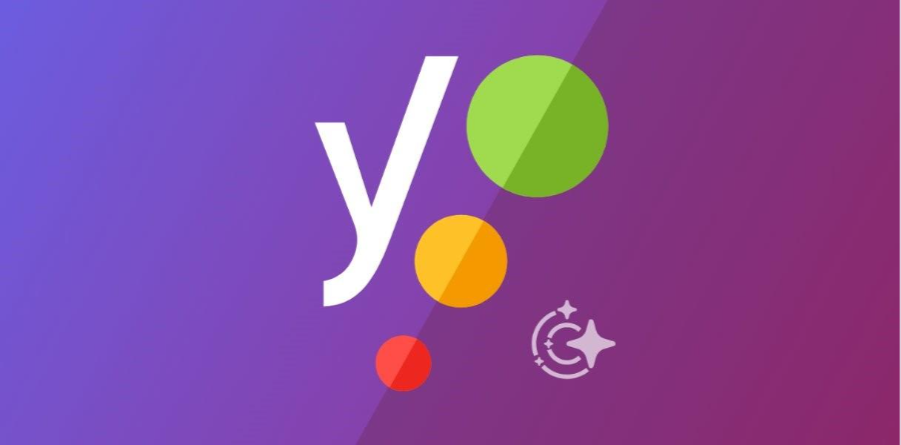Yoast Takes on AI Visibility with Launch of Brand Insights
As generative AI reshapes search behaviour, Yoast moves beyond plugins to help marketers track and improve how their brands appear in ChatGPT and other large language models.
As search behaviour shifts from typed queries to generated answers, Yoast the world’s best-known SEO plugin has entered the race to quantify brand performance inside large language models. Its new AI Brand Insights tool could redefine how marketers measure visibility in an era when “search results” are no longer just blue links.
For nearly two decades, search engine optimisation has been about page rank and keywords. But the ground beneath the industry is shifting. When consumers ask ChatGPT or Gemini for advice on a product, service, or brand, there are no ten results only one answer. For marketers, the question is simple but existential: how visible is my brand in AI-generated responses?
That’s the puzzle Yoast now wants to solve.
A new frontier: visibility in AI answers
The Dutch company, best known for its WordPress SEO plugin used by over 13 million sites, has launched the beta of Yoast AI Brand Insights a subscription tool that tracks how often and how favourably brands appear in AI platforms such as ChatGPT. It measures not only mentions and citations but also sentiment and credibility, condensing them into a single metric called the AI Visibility Index.
“AI answers are fast becoming the new starting point for customer journeys,” “Our customers want to know whether they show up in those answers, how they are represented, and how they compare against competitors.”
Niko Körner, Senior Director of Product at Yoast.
Unlike enterprise-grade reputation-management systems that cost thousands per month, Yoast has opted for accessibility. Pricing starts at $29.90 per month (or $358.80 annually), positioning the product squarely at marketers and brand managers who want practical insight without enterprise complexity.
The move marks Yoast’s expansion beyond SEO plugins into what it calls AI visibility a space many see as the next evolution of search optimisation.
From search traffic to conversation share
Traditional SEO was built on an observable architecture: crawlers, indexing, and ranking signals. In contrast, AI platforms operate as opaque systems that absorb content and generate synthetic responses. Brands cannot see how or why their names appear or don’t.
Early studies suggest that traffic referred by AI chat interfaces can convert three to nine times better than organic search, given the higher intent behind conversational prompts. But for most marketers, there is still no reliable way to track performance inside these models. Yoast’s launch attempts to close that gap.
The AI Visibility Index combines four factors:
Mentions: how frequently a brand is cited in AI outputs.
Citations: whether those mentions include attributed or linked sources.
Sentiment: how positively or negatively the brand is discussed.
Rank: how prominently it appears relative to peers.
The result is a single KPI that Yoast claims can benchmark brand performance across AI ecosystems.
An inflection point for SEO
The product arrives at a time of reckoning for the SEO industry. For years, Yoast’s own plugin has been synonymous with on-page optimisation, helping millions of small publishers and businesses structure content for Google’s crawlers. But the rise of generative AI has created a parallel search economy one less dependent on web traffic and more on model inclusion.
Put bluntly, the question is no longer how well your page ranks, but whether your brand is even part of the AI’s training corpus or conversational graph.
Marketers are beginning to notice. Agencies that once sold “keyword audits” now pitch “AI discoverability.” Content teams are experimenting with structured data that makes it easier for LLMs to attribute brands accurately. Some publishers are even striking licensing deals with model providers to ensure inclusion in training datasets.
Yoast’s new tool institutionalises that concern. By providing an accessible way to measure AI exposure, it could become the standard dashboard for what many are calling Generative Engine Optimisation (GEO).
The competitive landscape
Yoast is entering a market that’s already drawing attention from analytics firms and AI-monitoring startups. Platforms such as Perplexity, ChatGPT, and Claude are now used by millions of consumers for discovery, while enterprise vendors like Narrative BI and Noogle experiment with sentiment tracking across model outputs.
Most of these products, however, are built for data scientists or priced for global brands. Yoast is betting that there’s a far larger audience among mid-tier marketers people who simply want to know, “When ChatGPT answers a question in my category, does it mention me?”
That positioning plays to Yoast’s historic strengths: usability, reach, and reputation. Founded in 2010 and acquired by Newfold Digital in 2021, Yoast built its empire by simplifying SEO for non-experts. Its mission SEO for everyone is now evolving into AI visibility for everyone.
A redefinition of “search intent”
The implications go beyond marketing dashboards. As LLMs replace the first page of Google for many users, brand equity becomes intertwined with model training. If an AI consistently cites a competitor as the best option, that narrative can shape user perception long before a consumer reaches a website.
In this context, sentiment becomes a form of market share. A positive brand narrative inside ChatGPT or Gemini could drive disproportionate attention and conversion, especially in high-consideration categories such as finance, education, and travel.
Yoast’s tool therefore doesn’t just measure visibility it offers a way to manage digital reputation in a world where the line between “content” and “data” is dissolving.
The economics of AI visibility
The commercial logic is straightforward. For years, SEO budgets have followed the gravity of Google. But as user journeys splinter into generative interfaces, marketing spend will follow attention. If an AI chatbot becomes the consumer’s first advisor, brands will want to ensure they are mentioned—accurately and often.
At $29.90 per month, Yoast’s pricing signals both ambition and pragmatism. It’s affordable enough for experimentation, yet positioned to scale across millions of users already familiar with the Yoast ecosystem. The company’s infrastructure support, updates, and plugin integration provides a built-in distribution network few startups can match.
Upcoming updates will reportedly include actionable recommendations and support for more AI platforms, turning the product from a monitoring tool into a full optimisation suite.
An arms race for inclusion
The shift towards AI-first visibility is not just technological; it’s philosophical. In the SEO era, visibility was earned through meritocratic algorithms publish quality content, earn links, rise in rank. In the LLM era, visibility may depend on opaque model training data, corporate partnerships, or prompt-specific bias.
That creates risk. Smaller brands could vanish from digital conversation if their content isn’t captured in training datasets. Even larger players might find their positioning distorted by incomplete or outdated data. Tools like Yoast’s could serve as early warning systems revealing not only whether a brand is visible, but also how it is being described.
For the marketing industry, that insight will be crucial. It redefines discoverability not as a technical task but as a reputational one.
From plugins to platforms
For Yoast, this move marks the most significant product expansion since its founding. Its plugin business remains dominant within the WordPress ecosystem, but growth opportunities in traditional SEO are finite. By stepping into AI visibility, Yoast aligns itself with a structural shift: the migration of search from index to inference.
In doing so, it also broadens the strategic scope of its parent company, Newfold Digital a conglomerate that owns Bluehost and HostGator. If Yoast can own the visibility layer for both websites and AI models, it effectively straddles the next phase of web infrastructure.
That’s an appealing proposition in a market where attention, attribution, and AI are converging.
Beyond the hype
To sceptics, “AI visibility” may sound like a buzzword. But the numbers suggest otherwise. A growing share of product discovery now happens through conversational interfaces rather than search queries. Studies from Similarweb and Gartner show that AI-driven discovery could account for up to 20% of referral traffic by 2026.
For media and publishing companies many of which rely on search traffic for audience acquisition the implications are profound. As generative AI platforms absorb and synthesise content, the referral loop that sustained online journalism could weaken. For brands, meanwhile, the opportunity lies in proactive inclusion: ensuring that AI systems not only know who you are but describe you correctly. Yoast’s tool enters that conversation at a pivotal time.
Where this leaves marketers
For CMOs, the challenge is no longer confined to rankings and backlinks. It is about narrative equity the stories AI tells about their brands when no human editor is involved. The metrics that matter will increasingly resemble those found in reputation tracking or audience analytics rather than technical SEO.
If Yoast can democratise that data, it may once again play the role it did in the early 2010s: translating a complex, opaque system into something accessible and actionable. Back then it was Google’s algorithm; now it’s OpenAI’s.
As Niko Körner put it: “This launch is only the beginning. We are already working on improvements and expanding support for more large language models.” The company’s roadmap suggests that within months, users will be able to see not only where they stand but what to do next turning AI visibility from a static report into a dynamic optimisation cycle.
Conclusion: SEO meets LLM
The Yoast AI Brand Insights launch represents more than a product release it’s a signal that the era of search optimisation is giving way to model optimisation. Just as SEO once became a mandatory discipline for digital marketers, so too will AI visibility become a baseline competency.
In that sense, Yoast’s move feels inevitable. When information is mediated by machines that generate rather than retrieve, brand presence becomes a function of data representation. The brands that understand and measure how they live inside those models will hold a quiet but decisive advantage.
Thanks for reading all the way to the end of the article! This post is public so feel free to share it, and if you have not done so already sign up and become a member.





